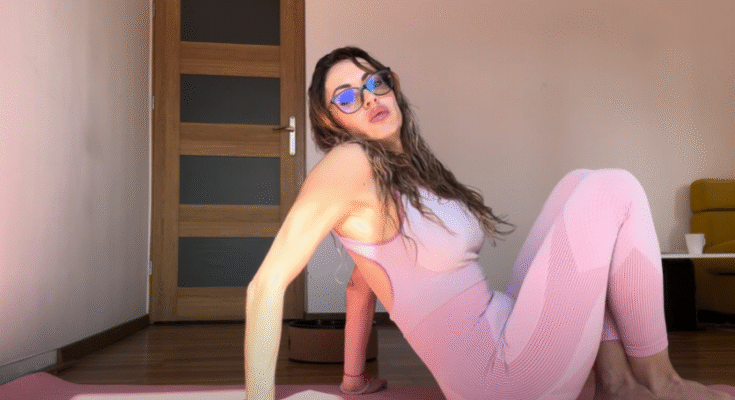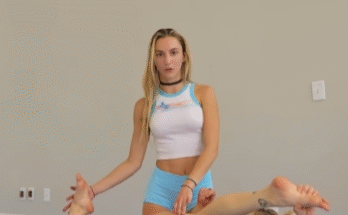Have you ever seen someone effortlessly twist their body and place both legs behind their head, looking as serene as a sleeping cat? You might have thought, “That’s impossible for me!” But with the right approach — a mix of preparation, mindset, and a little yogic magic — you can amaze yourself. Welcome to the world of Yoga Nidrasana, also known as the Yogic Sleep Pose.
In this guide, you’ll discover how to prepare your body and mind to attempt Yoga Nidrasana safely, and how, in just two focused minutes, you can begin to explore the beauty and depth of this incredible posture.

What is Yoga Nidrasana?
Yoga Nidrasana (योगनिद्रासन) comes from Sanskrit:
- Yoga = union or discipline
- Nidra = sleep
- Asana = posture
Despite its intimidating appearance, the pose is not about forcing the body into a pretzel shape. It’s about surrender, relaxation, and deep internal focus. When practiced correctly, Yoga Nidrasana promotes intense flexibility, calmness of mind, and a powerful sense of stillness — much like deep sleep, while being fully aware.
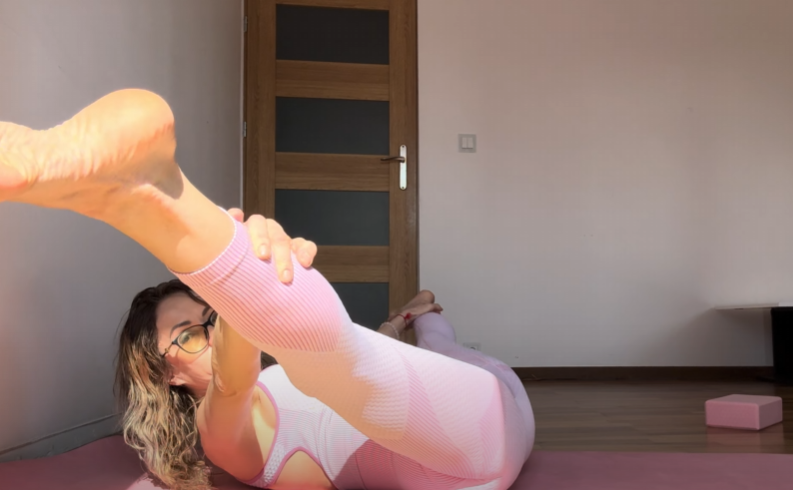
Can You Really Get Into Yoga Nidrasana in 2 Minutes?
Yes — but with a little honesty: the two minutes are for the final setup, not for building the necessary openness. Flexibility is something you nurture over time. However, if you’ve been working on hip openers, hamstring stretches, and spinal mobility, getting into the full posture in about two minutes is absolutely achievable!
Think of it like baking a cake: the actual baking takes a few minutes, but you need to gather your ingredients and mix them properly first. So, let’s talk about how to “gather your ingredients.”
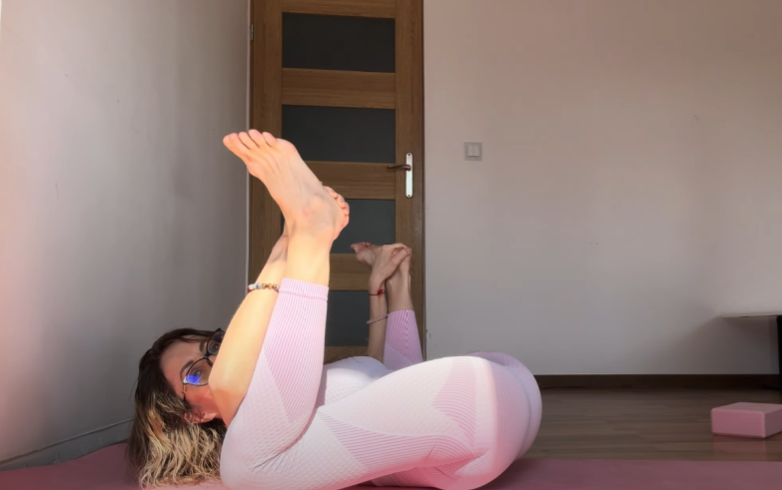
Step 1: Warm Up Smartly
Before you even attempt Yoga Nidrasana, warming up is essential. Spend at least 10-15 minutes preparing your body. Focus on:
- Hamstrings:
Poses like Uttanasana (Standing Forward Bend) and Paschimottanasana (Seated Forward Bend) gently lengthen the hamstrings. - Hips:
Open your hips with Pigeon Pose (Eka Pada Rajakapotasana) and Lizard Pose (Utthan Pristhasana). - Lower Back:
Use gentle twists and Child’s Pose (Balasana) to soften the lumbar spine. - Inner Thighs:
Butterfly Pose (Baddha Konasana) is a must to create the deep hip flexibility needed.
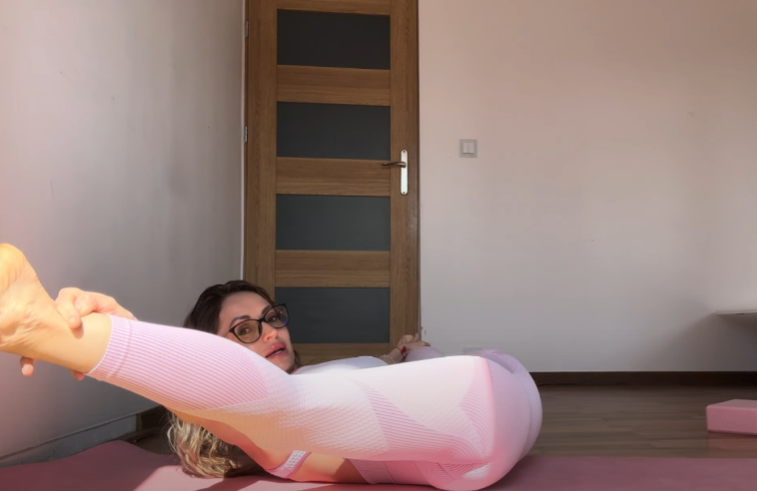
Step 2: Set the Right Mindset
Flexibility is as much mental as it is physical.
You need to relax, trust, and breathe.
If you approach Yoga Nidrasana with tension or fear, your muscles will resist you. So, before you even start moving:
- Take 5 deep breaths, inhaling calmness, exhaling doubt.
- Visualize your body softening, becoming more fluid and open.
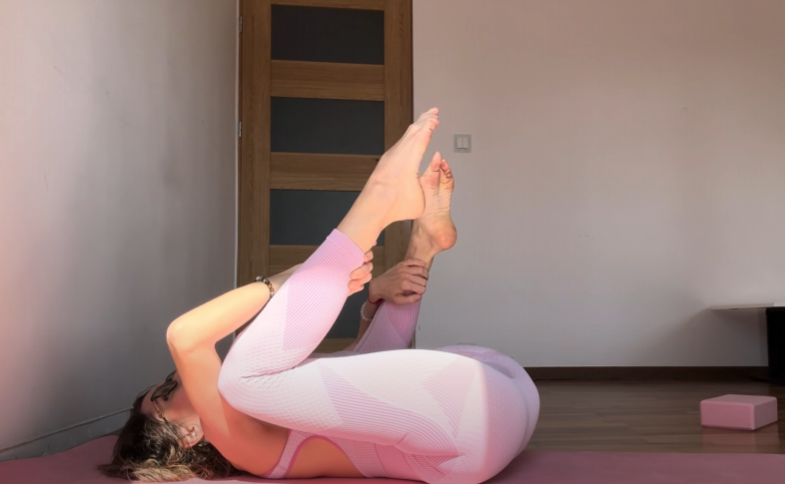
Step 3: The 2-Minute Method to Enter Yoga Nidrasana
Here’s the step-by-step breakdown:
Minute 1 – Getting Positioned:
- Lie flat on your back on a yoga mat.
- Bend your knees and hug them into your chest.
- Separate the knees slightly and guide them towards your armpits.
- Reach your hands between your legs, grabbing the outer edges of your feet (like in Happy Baby Pose).
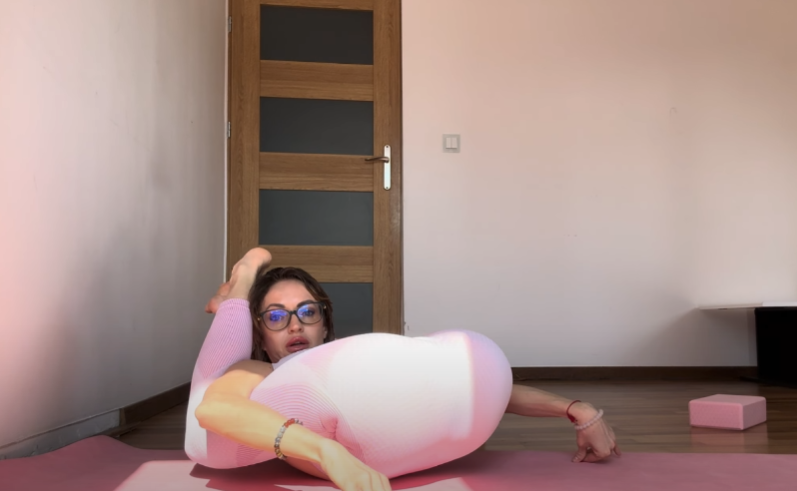
Minute 2 – Final Setup:
5. Slowly start guiding the feet closer together above your head.
6. Hook your ankles or shins behind your neck if possible.
7. Allow your back to round naturally as your legs drape over you.
8. Clasp your hands behind your back if accessible, or rest them on the floor.
9. Breathe deeply and relax your neck, shoulders, and jaw.
Congratulations — you’re in Yoga Nidrasana!
Even if you can’t get both feet perfectly behind your head at first, just getting close gives you all the deep benefits.
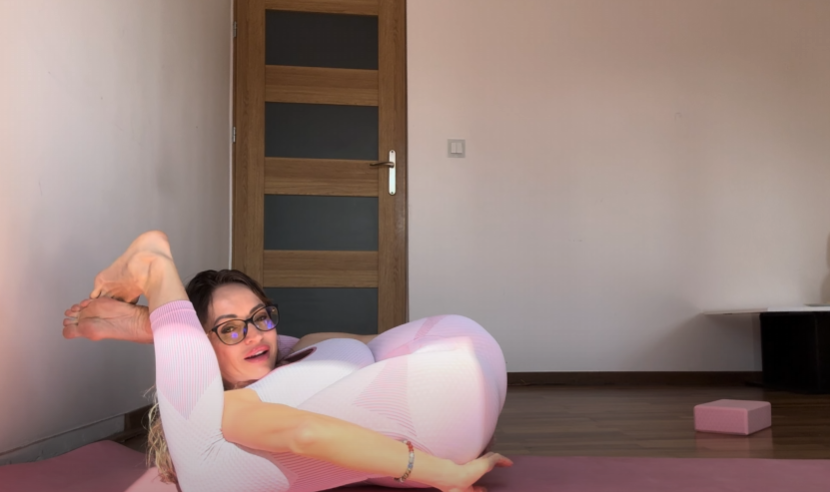
Common Mistakes to Avoid
When attempting Yoga Nidrasana, be mindful of these frequent pitfalls:
- Skipping warm-up: Cold muscles mean higher risk of strain or injury.
- Forcing the legs: If your hips or hamstrings resist, don’t push. Stay gentle.
- Holding your breath: Breath is your secret weapon. Breathe deeply throughout.
- Ignoring pain signals: Discomfort is normal, but sharp pain means STOP.
Tips for Success
- Practice Hip Openers Daily: Even just 5 minutes a day can transform your flexibility over a few weeks.
- Use Props: A rolled blanket under your back can make the initial lift easier.
- Stay Consistent: Yoga Nidrasana rewards those who are patient and regular.
- Keep a Soft Focus: Smiling slightly while practicing can help release unconscious tension!
The Deeper Benefits of Yoga Nidrasana
Beyond the impressive visual of the posture, Yoga Nidrasana offers incredible holistic rewards:
- Spinal Health: Gently stretches and decompresses the entire spine.
- Digestive Aid: The compression stimulates digestive organs.
- Mental Stillness: Creates a deeply meditative state.
- Emotional Release: Hips store emotional tension; this pose can bring profound release.
In ancient yoga philosophy, Yoga Nidrasana is considered a gateway to pratyahara, the withdrawal of the senses — preparing you for deeper meditation and inner peace.
What if You’re Not There Yet?
That’s okay!
Flexibility is a journey, not a race.
Start with poses like:
- Supta Kurmasana (Sleeping Tortoise Pose)
- Happy Baby Pose
- Pigeon Variations
- Double Pigeon (Agnistambhasana)
Over time, your body will naturally open up. Celebrate every little gain!
Final Thoughts
Yoga Nidrasana is more than just a flashy yoga party trick. It’s a doorway into surrender, deep relaxation, and quiet strength. Whether you can land the full pose today, in a month, or in a year, the real win is showing up for yourself, exploring your limits with kindness, and embracing the process.
So, are you ready?
Roll out your mat, warm up those hips, breathe deep, and in just two minutes, you might find yourself in a pose you once thought was impossible.
Your journey to flexibility, strength, and inner peace starts now.
Namaste. 🧘♂️✨
